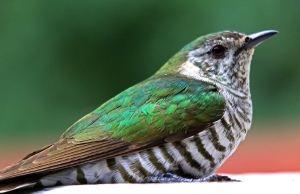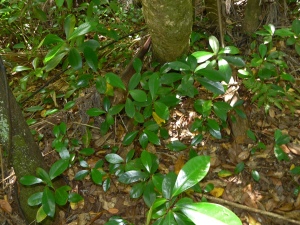Pest kill tallies alone may not be reliable indicators of success for groups and projects along the Kiwi Coast.

After several years of pest control, Riverlands Landcare out at Ngunguru have noticed that the number of animal pests being caught in their traps has noticeably reduced despite the same, if not more, effort being put in. “Where once I got 31 possums in one night, Jan and I have only caught four in the past eight months” says Wade Doak, coordinator of the Riverlands Landcare Group, “but biological indicators clearly show the results of our successful pest control”.
Biological indicators of success can include the regrowth of vegetation, fruiting and flowering of trees, an increase in birdsong or increased sightings of wildlife.
All can be simply measured to show trends over time of the effects of pest control. Landowners that have been carrying out pest control for many years, and are intensely familiar with their forests, wetlands, streams and coasts may notice quite dramatic changes. This summer Jan and Wade Doak witnessed never-before-seen blooming pohutukawa and found dense groves of large puriri seedlings.
Wade says the biological indicators of success are now evident at Riverlands: “The growing density of miromiro, quail of two species, the dramatic increase in tui and kereru, great numbers of fantail and grey warblers with many cuckoo of both species. Kiwi calls are frequent now, (male and female) and there are sightings and droppings around our homes. Recent sighting of pateke and documentation of spotless crake, fernbirds, and bittern sightings, indicate improvements in our marshes. We have weta galore and geckoes in our outbuildings”.
The Doak’s have also observed a corresponding lack of plant damage: “We no longer see nibbled foliage or eaten fruit – even fallen passionfruit now remain untouched and we no longer see empty macadamia nut shells, tooth drilled by rats. Our trail camera once recorded a possum grazing blackwood tree bark repeatedly. In fact, possums once stripped a single gum tree overnight! It was impossible to raise pohutukawa, but now some 150 plantings now flourish. Quality of human life has increased as our forests flourish.”

Documenting biological indicators and recording observed changes is a simple way for conservation projects to demonstrate the success of their hard work as the pest numbers are reduced. Selecting a small number of indicators, and monitoring them over a number of years, will yield the best results.
For more info or help on how to select and recognise biological indicators of success contact the Kiwi Coast Coordinator: ngaire@kiwicoast.org.nz
To find out more about Riverlands Landcare contact Wade Doak: wdthomasdoak@gmail.com



